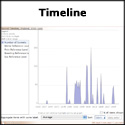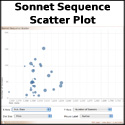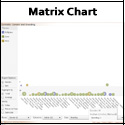Sixteenth-Century Technologies of Reproduction

- Heterosexual Sex ('Increase and Multiply" was a crucial motive of the growing English nation)
- Mirrors
The late sixteenth-century love sonnets themselves expose the limits of sexual reproduction not only by figuring the poems themselves as progeny, but also by positing the contemporary reproductive technologies of mirrors and print as a means of reproducing the subject in impossible, and sometimes homoerotic, desire. The mimetic desire of Petrarchism produces an impossible desire which so defines the sonneteer character that his appearance is not limited to sequences of fourteen-line poems; instead, in the height of the sonnet vogue the sonneteer is reproduced on the stage, functioning as the emblem and indicator of trendy poetic imitation in Love's Labors Lost, imitated desire in As You Like It, and the impossibility of fulfilled desire and inevitable violence in Romeo and Juliet. Finally, as new genres find their footing in sixteenth-century England, the sonneteer is reproduced in the doubling of the historical sonneteer Henry Howard Earl of Surrey in the pages of Thomas Nashe's early prose fiction, The Unfortunate Traveler. The repeated appearance of the sonneteer outside of his eponymous genre proves the impact of this character as a cultural figure. Moreover, the fact of that sonneteer emerges on the English landscape concomittantly with a boom in wealth and population, alongside such technologies as mirrors and print, suggests that the English sonneteer embodies a reaction to England's growing status. Ultimately, the means of the sonneteer's reproduction speak to the cultural conditions of sixteenth-century England, a period of growth and prodigality, in which the repeated story of the failure of heterosexual reproduction signals the impact of technologies of reproduction and the iconicity of the sonneteer.
Ranking System for Mention vs. Use of Reproduction Technologies
| 0 |
1 |
2 |
3 |
||
| absence of metaphorically or literally present "print" references | placement, subject, preface implies print | suggestion of reproduced writing in the narrative of the sequence | word "print" appears in a sonnet | ||
| Sex |
absence of metaphorically or literally present references to a sex act having occurred within the narrative of the sonnet sequence | concrete metaphorical reference to possibility of sex act | sex act described in included non-sonnet poem | sex act described in a sonnet | |
| Mirrors |
absence of metaphorically or literally present "mirror" references | presence of mirroring phenomena or metaphors, eg. Reflecting poetry, Narcissus and Eccho, mirroring visual effects | use of the words glass or mirror, including alternate spelling | 3+ references to literal mirrors | |
| Breeding |
absence of metaphorically or literally present breeding references | metaphorical suggestion of birth, procreation, or breeding | use of the word "breed," "birth," "bear," "procreate," "born," "bore," and alternate spellings | 3+ references to breeding |



